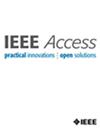Training-Free Affordance Labeling and Exploration Using Subspace Projection and Manifold Curvature Over Pre-Trained Deep Networks
IF 3.4
3区 计算机科学
Q2 COMPUTER SCIENCE, INFORMATION SYSTEMS
引用次数: 0
Abstract
The advancement in computing power has significantly reduced the training times for deep learning, enabling the rapid development of networks designed for object recognition. However, the exploration of object utility, the object’s affordance, as opposed to object recognition, has received comparatively less attention. Existing object affordance models exhibit shortcomings, including limited robustness across diverse architectures and insufficient performance in complex environments. This work focuses on using pre-trained networks trained on object classification datasets to explore object affordances. While these networks have proven instrumental in transfer learning for classification tasks, the presented approach in this study diverges from conventional object classification methods by labeling affordances without modifying the final layers. Instead, pre-trained networks are employed to learn affordance labels without requiring specialized classification layers. Two approaches are tested: the Subspace Projection Method and the Manifold Curvature Method, which facilitate the determination of affordance labels without such modifications. Both the Subspace Projection Method and the Manifold Curvature Method were evaluated using nine distinct pre-trained networks across two different affordance datasets. The Subspace Projection Method achieved a True Positive Rate of up to 94% and 96% for the best-performing networks on each dataset, while the Manifold Curvature Method attained True Positive Rates exceeding 98% and 99% with its top-performing networks. Furthermore, both methods identify affordance labels that are not marked in the ground truth but are present in various cases. The robustness of the Manifold Curvature Method and the exploration capability of both methods highlight the effectiveness of proposed techniques for affordance labeling.利用子空间投影和流形曲率在预训练深度网络上进行无训练的可视性标注和探索
计算能力的进步大大减少了深度学习的训练时间,使用于对象识别的网络得以快速发展。然而,相对于对象识别,对对象效用的探索,即对象的供给性,受到的关注相对较少。现有的对象可视性模型显示出缺点,包括跨不同体系结构的有限健壮性和复杂环境中的性能不足。这项工作的重点是使用在对象分类数据集上训练的预训练网络来探索对象的可视性。虽然这些网络已被证明有助于分类任务的迁移学习,但本研究中提出的方法与传统的对象分类方法不同,它在不修改最终层的情况下标记能力。相反,使用预训练的网络来学习功能标签,而不需要专门的分类层。测试了两种方法:子空间投影法和流形曲率法,这两种方法便于在不进行此类修改的情况下确定功能标签。子空间投影法和流形曲率法在两个不同的功能数据集上使用九个不同的预训练网络进行了评估。对于每个数据集上表现最好的网络,子空间投影法的真阳性率高达94%和96%,而流形曲率法在其表现最好的网络上的真阳性率超过98%和99%。此外,这两种方法都可以识别在基本事实中没有标记但在各种情况下都存在的可用性标签。流形曲率方法的鲁棒性和两种方法的探索能力突出了所提出的功能标记技术的有效性。
本文章由计算机程序翻译,如有差异,请以英文原文为准。
求助全文
约1分钟内获得全文
求助全文
来源期刊

IEEE Access
COMPUTER SCIENCE, INFORMATION SYSTEMSENGIN-ENGINEERING, ELECTRICAL & ELECTRONIC
CiteScore
9.80
自引率
7.70%
发文量
6673
审稿时长
6 weeks
期刊介绍:
IEEE Access® is a multidisciplinary, open access (OA), applications-oriented, all-electronic archival journal that continuously presents the results of original research or development across all of IEEE''s fields of interest.
IEEE Access will publish articles that are of high interest to readers, original, technically correct, and clearly presented. Supported by author publication charges (APC), its hallmarks are a rapid peer review and publication process with open access to all readers. Unlike IEEE''s traditional Transactions or Journals, reviews are "binary", in that reviewers will either Accept or Reject an article in the form it is submitted in order to achieve rapid turnaround. Especially encouraged are submissions on:
Multidisciplinary topics, or applications-oriented articles and negative results that do not fit within the scope of IEEE''s traditional journals.
Practical articles discussing new experiments or measurement techniques, interesting solutions to engineering.
Development of new or improved fabrication or manufacturing techniques.
Reviews or survey articles of new or evolving fields oriented to assist others in understanding the new area.
 求助内容:
求助内容: 应助结果提醒方式:
应助结果提醒方式:


